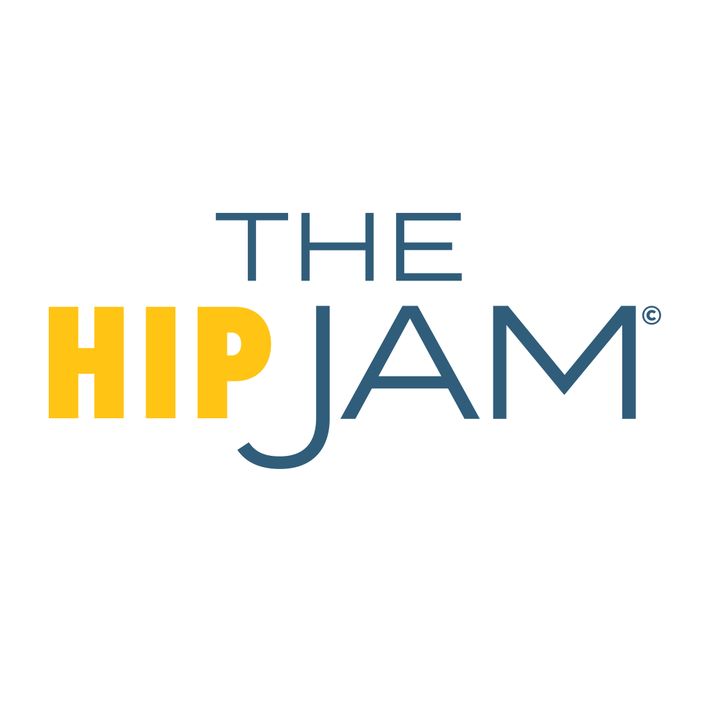Check out Tom Myers in these great event series!

Check out Tom Myers in the Hip Jam
His presentation is amazing!

Tom Myers
Tom says: “I developed the Anatomy Trains during the 1990’s, as a game for students to play when I was teaching Fascial Anatomy at the Rolf Institute. I was inspired by Ida Rolf, and have been practicing the deep fascial work I learned from her since 1976.
“But when I came to try to teach, all the books you can find put forward the ‘single-muscle’ theory. Ida Rolf kept saying, “It’s all connected through the fascia.” Other than invoking the image of a grapefruit or a loofah, how do you make this real? How do you get ‘actionable intelligence’ on the functioning of the whole musculoskeletal system?
“Just as an exercise to cement the students’ knowledge, I began stringing the muscles together through the fascia. This idea was initiated when Dr Jim Oschman gave me an article by Raymond Dart (the anthropologist and Alexander Technique student) linking the muscle in the trunk in a double-spiral arrangement (which shows up here as part of the Spiral Line).
“My reaction was, “Why stop there?” From this base, I expanded Dart’s idea to the whole body, to help students see connections by stringing muscles together. The ‘rules’ are that the connections have to follow the grain in the fascial fabric in more or less a straight line, without breaks or changing levels.
“After a few teaching iterations, the whole project became so interesting that I started to systematize these connections. With the encouragement of my friend Annie Wyman, the full picture and implications of the lines started to become clear. I started to see the lines in assessing my clients, and then started building my structural bodywork sessions around these lines.
“Moving toward publishing happened as a happy coincidence. One of my students (in my very small early classes for massage therapists in Maine) loved these lines, and said, “I’m going out to Hawaii to teach these lines to Lee Joseph’s students!” (His was another structurally-related school of bodywork.) I realized that if I was going to lay claim to this idea and have it come out correctly, I needed get it written down. At the same time, Leon Chaitow, N.D., D.O. was forming the Journal of Bodywork and Movement Therapies, and was calling in his chits with all his old friends to get articles to start this venture off.
“The resulting journal articles proved so popular that Churchill Livingstone (who has since been swallowed by Harcourt, which was in turn swallowed by Elsevier) in the form of Mary Law asked me to write a book on the idea. The book was published in 2001, with the second edition appearing in 2009, and the 3rd in 2014. The book has been translated into 10 other languages – German, Finnish, Polish, Portuguese, Spanish, Italian, Korean, Japanese, Russian, and modern and traditional Chinese.
Tom's Website: anatomytrains.com

A PROFESSION THAT ENGAGES YOUR SENSES
To master the craft there is no substitute for a daily practice for several years. Let yourself have the foundation of a few years in the trenches, churning out daily professional healing. Let it become you without, hopefully, consuming you. I know musicians who can get up every afternoon, go to smoky bars or raucous clubs and deliver cracking good music reliably every night. They can also be healers but they are going to lay on hands (or whatever they do) when they want to, how they want, and on whom they choose.
I am the opposite – I can get up, dress appropriately and deliver professional healing on cue for ten hours but when I go to play music, it is when I want and for whom I want. Which type of person are you? An artist healer is one thing (and valuable) but a professional healer is another.
The art of healing, the third side of that triangle, begins from the beginning. “What brought you in?” is a crucial question and key to your art and the art only becomes richer and richer with the ensuing years.
No one can tell you what will contribute to your art. Fleeting moments – as when a teacher replaced my ‘intentional’ touch with ‘invitational’ touch – can have profound effects for years. Being a sailor contributes to my bodywork art, an appreciation of nature and my encounters with animals of all kinds. Altogether though, my clients, especially the difficult ones, have taught me more about this art than anything else.
I have been dragged, kicking and screaming, into my future. There was no grand plan. I followed intuitive opportunity. It worked out better than if I had planned it and in perfect hindsight I could make no better choice. A profession that fully engages the senses, the physical self, requires emotional maturity, admits of so many luscious theoretical implications and at the same time leaves your clients in a more empowered stance. It is hard to beat.
In addition to founding this MAT training facility, Dalton has written three bestselling bodywork textbooks and created a full slate of online continuing education courses. A perpetual student himself, Dalton continues to study pain management from every angle. Inspired by the latest advances in brain imaging, he has begun exploring the brain’s role in chronic pain — and now blends this exciting research into his brain-based bodywork tea



